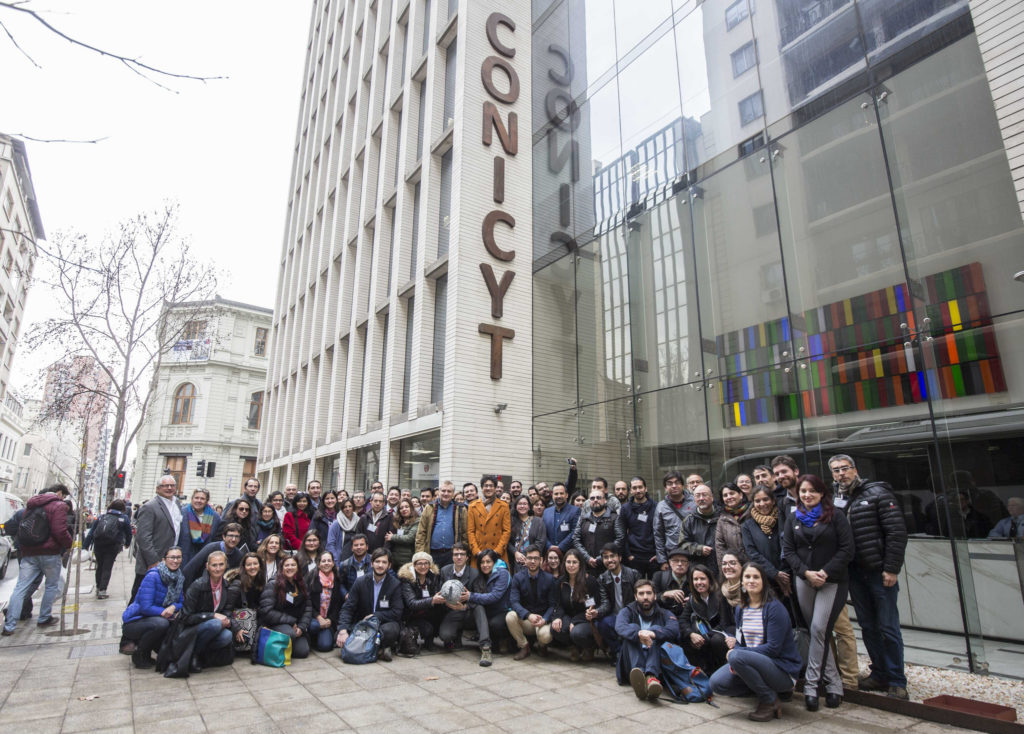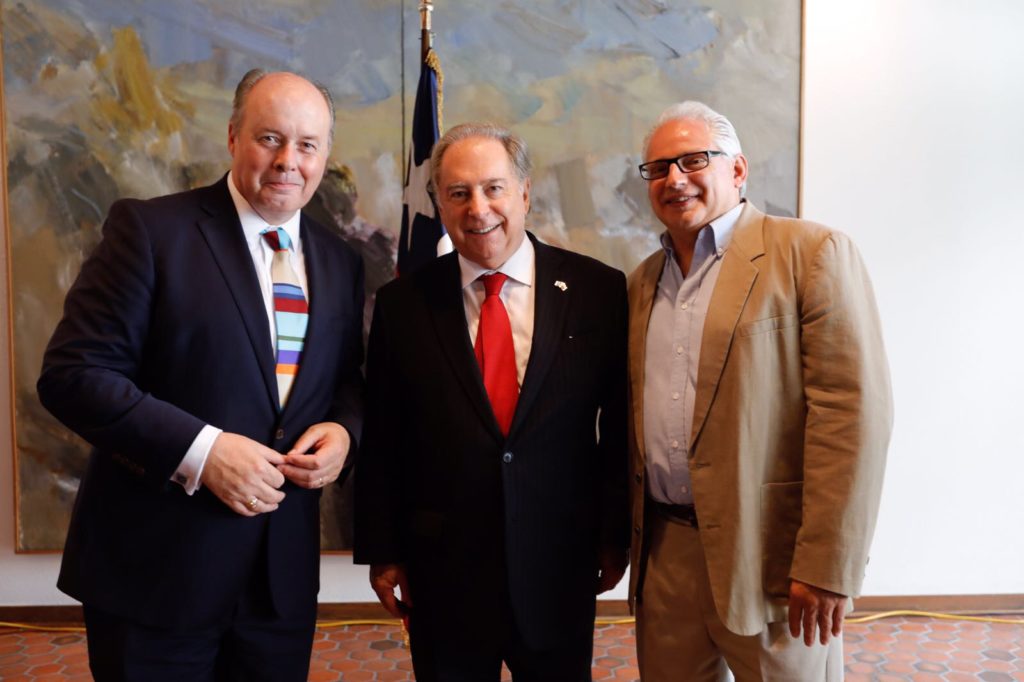The U.S. National Science Foundation National Radio Astronomy Observatory (NSF NRAO), in partnership with several leading Mexican universities and research institutes, has announced a series of landmark agreements and meetings aimed at advancing Mexico’s role in the Next Generation Very Large Array (ngVLA) project.
Recent News
Astronomers Discover a Superheated Star Factory in the Early Universe
Astronomers have uncovered a previously unknown, extreme kind of star factory by taking the temperature of a distant galaxy using the ALMA telescope. The galaxy is glowing intensely in superheated cosmic dust while forming stars 180 times faster than our own Milky Way.
Astronomers Share Largest Molecular Survey To-date: GOTHAM Legacy Data Goes Public
Astronomers in the “GBT Observations of TMC-1: Hunting Aromatic Molecules” research survey, known as GOTHAM, have released a spectral line survey with largest amount of telescope time ever conducted, charting more than 100 molecular species only found in deep space.
AUI Working with Chilean Embassy to Advance Astronomy Education, Outreach, and Engagement
In recent years AUI has worked with other stakeholders to advance astronomy education, outreach, and engagement in Chile, as well as between Chile and its international partners. The Chile-U.S. Astronomy Education and Outreach Summit initiative culminated in the release of “Reaching for the Stars: Findings of the Chile-US Astronomy Education and Outreach Summit.”

Cumbre de la Red Chilena de Educación y Difusión de la Astronomía attendees (August 10, 2017). Photo by CONICYT.
In November 2016, CONICYT in Chile adopted Reaching for the Stars, and is now working with AUI and other key stakeholders to advance the recommendations made in the document. One such recommendation was the establishment of an annual meeting in Chile that brings together astronomy educators to share best practices, and to explore innovative ideas to advance astronomy in Chile, and internationally. In August 2017, CONICYT, in collaboration with AUI and others, held the first meeting of the Cumbre de la Red Chilena de Educación y Difusión de la Astronomía (Chilean Network for Astronomy Education and Outreach), bringing together nearly 100 astronomy educators and stakeholders for the three-day event. Visit http://www.conicyt.cl/astroeducacion/#programa for more information.

Left to right, Pete McEvoy – Vice President, Administration, AUI, Juan Gabriel Valdes – Chilean Ambassador to the United States, and Tim Spuck – AUI STEM Education Development Officer at the Ambassador’s residence for Fiestas Patrias (September 18, 2017, Photo by Roberto Candia)
Most recently AUI has partnered with the Chilean Embassy in Washington DC to bring members of the Cumbre de la Red Chilena de Educación y Difusión de la Astronomía Organizing Committee to the Astronomical Society of the Pacific (ASP) annual meeting in December (https://www.astrosociety.org/education/asp-annual-meeting/ ). The Chilean Embassy is providing financial support for a team of five individuals including Luis Chavarria, Director of Astronomy at CONICYT, Leonor Opazo from NOAO-CTIO in Chile, Jacqueline Soto from Observatorio Astronomico Andeno, Erika Labbe from Universidad Diego Portales, and AUI’s STEM Education Development Officer, Tim Spuck to attend the meeting. The team will be on a mission to:
- Explore ideas for activities that could be replicated in Chile for the 2019 Total Solar Eclipse,
- Gather ideas on how to better organize and implement the Cumbre de la Red Chilena de Educación y Difusión de la Astronomía 2018 and 2019 meetings and beyond,
- More broadly get ideas about best practices in astronomy education and outreach that could be replicated in Chile, and
- To further build/strengthen the network of astronomy education and outreach with international partners.
The group represents various sectors across astronomy EPO, including government, professional observatories in Chile, astrotourism, universities, and K-12 formal education.
Recent News
NSF National Radio Astronomy Observatory and Mexican Institutions Sign Historic Agreements to Advance ngVLA Collaboration
The U.S. National Science Foundation National Radio Astronomy Observatory (NSF NRAO), in partnership with several leading Mexican universities and research institutes, has announced a series of landmark agreements and meetings aimed at advancing Mexico’s role in the Next Generation Very Large Array (ngVLA) project.
Astronomers Discover a Superheated Star Factory in the Early Universe
Astronomers have uncovered a previously unknown, extreme kind of star factory by taking the temperature of a distant galaxy using the ALMA telescope. The galaxy is glowing intensely in superheated cosmic dust while forming stars 180 times faster than our own Milky Way.
Astronomers Share Largest Molecular Survey To-date: GOTHAM Legacy Data Goes Public
Astronomers in the “GBT Observations of TMC-1: Hunting Aromatic Molecules” research survey, known as GOTHAM, have released a spectral line survey with largest amount of telescope time ever conducted, charting more than 100 molecular species only found in deep space.
